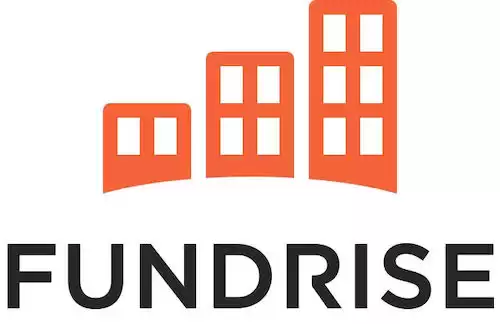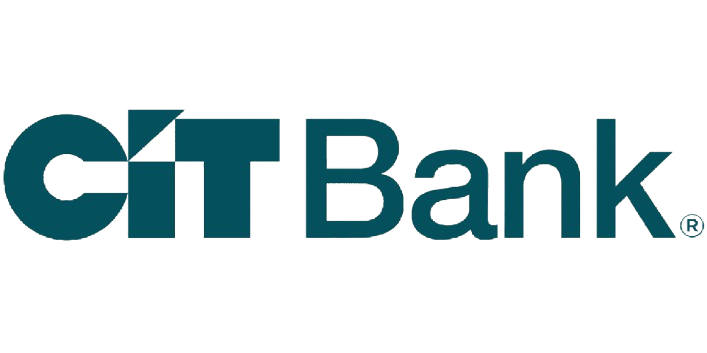For many people, having money to invest can be the biggest hurdle when it comes to adding to your income and generating wealth. However, if you’ve already got money set aside for investments, the next biggest question is: where do I invest it?
If you’re faced with this dilemma and have $50K at your disposal, you’ve come to the right place.
This guide includes several opportunities you can take advantage of to turn that $50,000 into $100,000 or more. The best part is that you don’t have to choose just one investment.
Instead, you should consider diversifying your investments to make the most of your resources. By diversifying, you can potentially reduce the volatility of your portfolio and increase your chances of achieving your long-term investment goals.
When you invest $50,000 into several opportunities at once, you can also begin to see which investments are bringing in the highest returns. You may even decide to switch up your strategy at that point and double down on your investment efforts. It all depends on what investments you’re comfortable with and how they perform.
Are you ready to see how you can invest $50K? Let’s get started!
How to Invest $50K
Each of the following investment opportunities comes with its own set of rules, regulations, risks, and rewards. Keep a list of the investments that strike your fancy to learn more about them and determine where and how you’ll invest.
1. 529 College Savings Plan
Saving for college starting when your kids are young can help you prepare for this large expense. 529 college savings plans allow you to do just that. The funds you contribute to these plans can be used to pay for housing, books, and even tuition.
Depending on which 529 savings plan you choose and the state you live in, you or your child may also be eligible for additional incentives. Some plans even stipulate what age your child has to be to remove funds. If you have children and an extra $50K to spare, consider a 529 college savings plan.
2. CDs
Certificates of deposit (CDs) can help you make money by simply loaning the government funds for various purposes. Investors tend to incorporate a CD into their portfolio as a safe and low-risk method for diversification. These funds are FDIC-insured in most cases and can run anywhere from six months at a time to one to two years or more.
It’s important to understand that even though you can purchase a CD for a shorter period of time, most investors consider them to be a long-term investment. This is because you’ll face early withdrawal penalties if you remove funds before the certificate matures.
At the same time, investors find ways to work around this timeframe. Though it takes some coordination, you can easily stagger your CDs to mature at intervals. This strategy does require tying up a fair amount of funds, but you can depend on it for a regular return on your investment. Check different banks and brokerage firms to find the best CD rates available.
3. ETFs
Exchange-traded funds, or ETFs, resemble mutual funds but trade like stocks. Many ETFs are index funds that have low expense ratios. If you’re not familiar with what an ETF is or are looking for something new to try investment-wise, you might find ETFs to be the ticket. Public is a good resource you can use to invest in ETFs. There are no minimum investment requirements and great for beginners.
Public is an investment platform that allows users to buy, sell, and own fractional assets. These assets include stocks, ETFs, crypto, NFTs, art, and collectibles. As a Public member, you can now grow your savings in the same place you invest, enjoying an industry-leading 5.1% APY – a rate that's hard to find elsewhere. And the best part? There are no subscription fees, account fees, or maintenance charges.
4. High Yield Savings Account
Though it might not seem like an investment per se, a high-yield savings account can do more for your money than a typical savings account. This is because the APY you’ll get from these savings accounts can be anywhere from 3-5% typically. Most traditional savings accounts can barely offer 1% APY, so your money has more power if you open a high-yield savings account instead.
These types of savings accounts are also great for passive income. They’re similar to a money market account (which you can also invest in) and are FDIC-insured as well. Let’s face it, a savings account doesn’t get the senses tingling like a stock or similar type of investment, but when it comes to safe ways to earn investment income, a high-yield savings account is high on the list.
In fact, did you know that you can earn a high rate of interest from cryptocurrency savings accounts? These accounts do require a bit of interaction with an alternative type of investment, but they can help your money work in multiple ways as well.
5. Individual Bonds
There are three main types of bonds you can choose from, namely treasury, corporate, and municipal. These loans are made in return for interest payments and the face value of the bond when it matures. Some bonds are exempt from federal taxes, such as municipal bonds. Corporate and treasury bonds, however, are not. At the same time, treasury bonds are backed by the U.S. Treasury, while corporate bonds are backed by the financial state of that company.
6. Individual Stocks
Stocks are probably what first came to mind when you thought of investments, but that’s not to say you should dismiss them entirely. Many investors make a living from stocks. While it does take a bit of research and dedication to learn how to buy and sell stocks, it can be well worth it if you keep at it.
Besides purchasing stocks in full, you can also purchase fractional shares as well. These itty-bitty pieces of a stock help investors who aren’t able to afford the buy-in for a full share. Don’t let the “fractional” tag fool you; these shares can be just as profitable as a full share.
Income comes from a stock via capital gains, or a stock price rising from the price point at which you purchased it. You may also earn dividend income from stocks. Many brokers offer stock options, including E*TRADE, TD Ameritrade, Ally Invest, and Robinhood. If you are new to the stock market, you may even be able to earn free stocks as well by signing up on one of these platforms.
If you do intend to invest in stocks, you may find a dividend tracker or stock analysis software particularly useful. These can help support your strategy or even inform any changes you might want to make for larger returns.
7. Mutual Funds
Mutual funds are a type of investment that involves several investors pooling their resources together to purchase stocks, bonds, etc. These are also a great investment choice for those looking to increase their 401(k). Most mutual funds are low-cost and actively managed, though there are plenty to choose from. Check out our mutual funds guide to learn more about this type of investment.
8. Peer-to-Peer Lending
Peer-to-peer lending platforms such as Prosper can help connect investors to individuals looking for loans. By connecting directly with borrowers, investors can earn a better return on their investments, though there is a risk of these borrowers defaulting on their loans. However, there are still certain fees associated with these platforms, such as an origination fee, a closing fee, and an annual fee.
9. Real Estate
Within the realm of real estate, there are many investment opportunities to take advantage of depending on what you’re looking for. For example, you can invest in real estate investment trusts, also known as REITs. These trusts are publicly traded like stocks and include commercial real estate, retail space, and residential properties. Brokers such as Streitwise and Fundrise are great platforms to use to get into REITs.
You can also use these platforms to participate in real estate crowdfunding. In this investment scenario, investors buy into a property deal as shareholders. While historically these platforms have restricted participation to accredited investors only, nowadays even non-accredited investors can participate.
Fundrise is a very easy-to-use app that allows individuals to access crowd-funded real estate investing without spending a fortune. This option is best for users who want to make money consistently and let their money make them money. Open an account with a minimum investment of $10 and get quick access to real estate funds tailored to different investment goals.
10. Retirement
Contributing to your retirement is delayed gratification, but it can certainly help to have that money waiting for you once you reach 65 years of age. If you contribute to an IRA, you may be able to avoid paying taxes on that income as a way to save money.
You may also be able to participate in an employer-sponsored 401(k) if it’s offered. If you contribute the maximum amount per year to that account, you can receive a full employer match if that’s an option on your plan.
11. Robo Advisors
Knowing you want to invest and devoting your free time to learning about investments are two different things. If you’re not interested in learning about stocks to the point where you could invest in them as a career, you can certainly rely on robo advisors to do the work for you. These advisors automate your investing so you can participate without having to devote your life to the practice.
Most robo advisors will inquire about your risk appetite and tailor your plan to that assessment. Many of them will come with fees, especially if they rebalance your investments for you. If you’re looking for a good robo advisor, check out Betterment, M1 Finance, and Wealthfront.
12. Taxable Investment Accounts
If you’re looking for diversity in your investments, check out taxable investment accounts. These are great if you have enough investments in your retirement accounts and maintain more liquidity if need be. Most taxable investment accounts are held in an IRA or another type of retirement account. If you withdraw these funds before you come of age, you will pay a 10% fine.
Alternative Investment Sources
Mainstream investment options act as tried and true methods you can take advantage of, but if you’re feeling a bit adventurous or just want to try something new, you can add one of the following alternative investments to your portfolio:
- Art
- Coins
- Stamps
- NFTs
- Wine
- Antiques
- Private equities
Additional alternative investments include starting your own business, fixing up/adding to your home, or even investing in Amazon fulfillment. In addition, cryptocurrency is quickly becoming a more mainstream alternative investment. Platforms such as Robinhood, Coinbase, and eToro allow you to invest in many different cryptocurrencies depending on your risk appetite. While these alternative currencies do require a bit of a learning curve, there’s plenty of advice out there on various strategies you can use.
As you grow your wealth, you may find new investments you couldn’t previously access. For instance, the investments available to someone with $50K hardly compare to those available to an investor with $100K at their disposal. With that said, the same principles apply to investing $100K as they do for $50K.
When Should You Invest $50K
Having $50,000 to invest in whatever you choose can complete the definition of success for many people. However, that doesn’t mean you have to stop with $50K. Instead, you can continue to grow that wealth and achieve financial success.
Before investing that $50,000, however, you should ask yourself the following questions:
- Have I paid off all my outstanding debts?
- Do I have an established and sustainable emergency fund?
- What types of investments am I comfortable with/knowledgeable about?
- How much risk am I willing to take on?
In addition to these questions, you can also ask yourself what goals you’re trying to accomplish by investing the $50K. While the ultimate goal might be to establish wealth for generations to come, you might consider adding another goal to the mix.
Perhaps you’d like to earn $1,000 in dividends per year or whatever your goals might be, write them down and keep them in mind as you consider how you can invest your $50K.
Passive and Active Investing
Once you’re prepared to start investing, you’ll need to consider whether you’ll be in the driver’s seat or if you want to leave the hard part to a robot. In other words, you’ll need to choose between active and passive investing.
Active investing requires you to determine which opportunities you’ll take advantage of and how much you’ll allocate. Passive investing, however, can help you invest without having to worry about the fine details. Robo advisors are great for passive investors, whether you choose to let an algorithm choose your stocks or join a pool of investors to fund physical assets.
Invest Today to Reap the Benefits Tomorrow
We hope you’ve found this article on how to invest $50K useful in figuring out where you should invest and what opportunities are available to you. There’s no secret formula to investing any amount. Instead, you’ve got to focus on your financial goals and determine not only how much risk you want to take on, but what opportunities pique your interest. You never know when choosing the right option might even triple or quadruple your wealth.
FAQ
There’s no surefire way to make tons of money by investing $50K, but there are particular opportunities that reduce risk. However, most of these opportunities (such as a high-yield savings account) are often less lucrative than other high-risk investments.
High-yield savings accounts are often considered the safest investment, along with contributing to an IRA or similar retirement account. At the same time, a 529 college savings plan can be safe as well if you’ve got children.
The best investments for beginners are typically passive income sources where an algorithm chooses the investment opportunities for you. Robo advisors are popular for this very reason. However, that doesn’t necessarily make them the most lucrative investments, depending on where you choose to invest your money.













